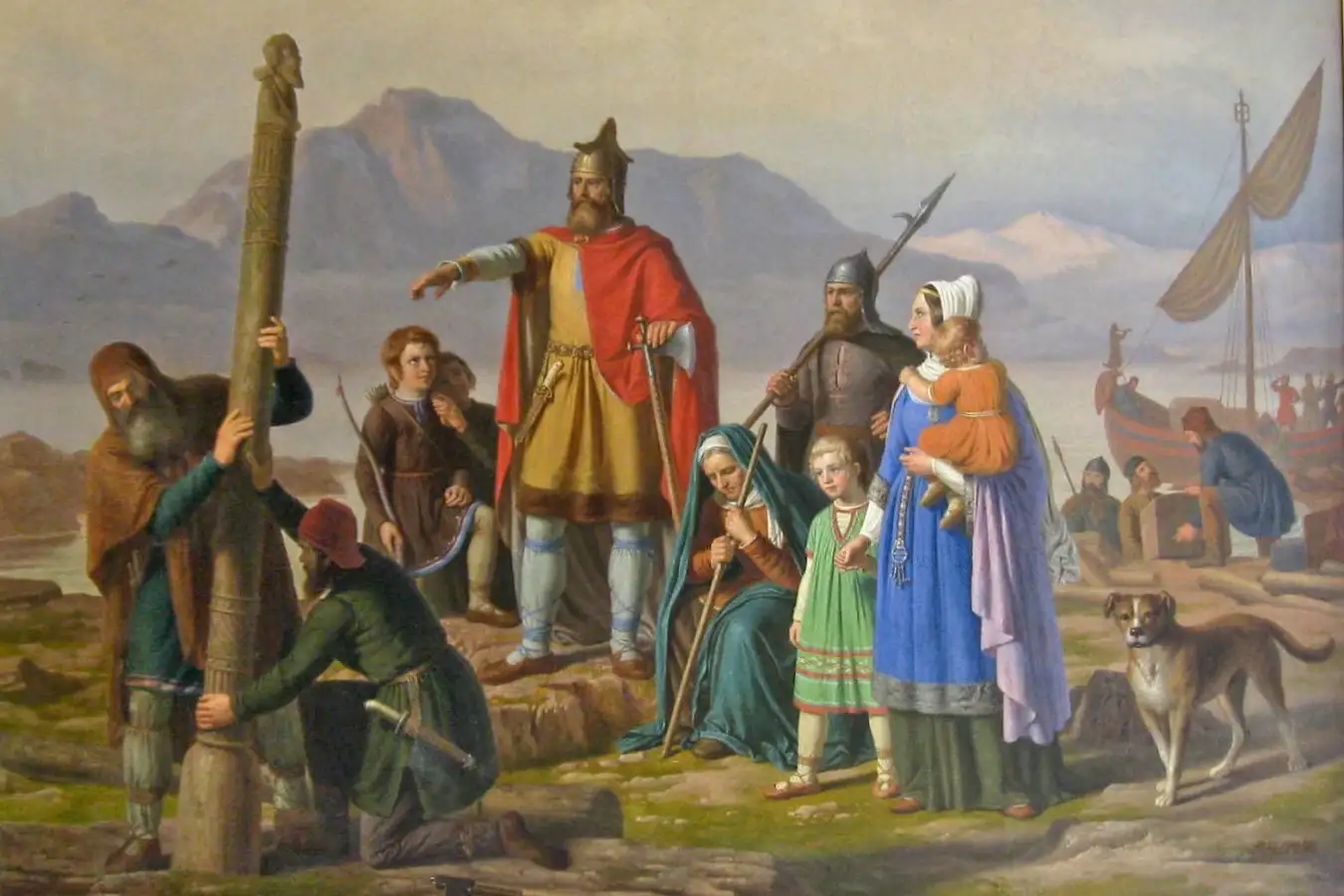
Historical accounts say Ingólfr Arnarson was the first Norse settler of Iceland, arriving in the 870s, but this may not be true
Public domain
Norse people may have lived in Iceland almost 70 years earlier than historians thought, and their arrival might not have been the environmental disaster it is often portrayed as.
Historical accounts suggest that people first settled in Iceland in the 870s. This early migration is often depicted as an ecological disaster driven by Viking raiders or Norse settlers as they cleared the island’s forests for fuel, building material and fields. Forests now cover just 2 per cent of the country.
Firm evidence for when the first settlers arrived has been hard to come by. Archaeologists have unearthed an ancient wooden longhouse near the fjord of Stöðvarfjörður in the east of Iceland dating to around AD 874, underneath which is an older longhouse thought to be a summer settlement built in the 800s rather than a permanent home, but this finding hasn’t yet been reported in a scientific paper.
Now, Eske Willerslev at the University of Copenhagen, Denmark, and his colleagues have examined environmental DNA (eDNA) extracted from two sediment cores drilled at Lake Tjörnin in central Reykjavík, one of Iceland’s earliest and longest-occupied settlements, to see which species were present when. By examining layers of volcanic ash and using radiocarbon dating and plutonium isotope analysis, the researchers put together a timeline spanning from about AD 200 to the modern day, aligned with known historical events.
One key marker they used is known as the Landnám tephra layer, the ash and fragments left over from a volcanic eruption in about AD 877. Most evidence of human occupation in Iceland sits above this layer, so it was laid down after the eruption.
“Signs below the tephra are like the smoking gun that there was earlier human activity,” says Chris Callow at the University of Birmingham, UK, who wasn’t involved in the study.
Willerslev and his colleagues suggest people arrived almost 70 years before that mark: about AD 810. That is because at this point, they saw an increase in a compound known as levoglucosan, an indicator of biomass burning, as well as a rise in viruses associated with sewage.
“If it had been 850, I wouldn’t have been so surprised, but 810 is early for Viking expansion in the North Atlantic,” says Callow. “Overall, this is a nice confirmation of what we might have suspected, but it’s still quite controversial to have a date as early as 810.”
Putting together this comprehensive environmental history of the region is phenomenal, but the evidence for such an early date isn’t conclusive, says Kathryn Catlin at Jacksonville State University in Alabama. “When it comes to sewage biomarkers, there is a little bump around 800 and then nothing until 1900. Where are all the indicators of humans in sewage biomarkers and the intervening time period?” she says. And although biomass burning can indicate the presence of people, fires can also be caused by natural sources like lightning, she adds.
Willerslev and his colleagues, who declined to speak to New Scientist, also found that the arrival of settlers coincided with an increase in local biodiversity. The DNA record suggests they brought grazing livestock with them, grew hay meadows and practised small-scale barley cultivation for brewing beer.
Contrary to the conventional view of rapid deforestation, eDNA from pollen revealed that birch and willow trees expanded during the settlement period. For example, birch pollen grains increased fivefold between AD 900 and 1200, which the researchers think could have been down to deliberate management, keeping livestock away from trees to ensure settlers continued to have easy access to wood for timber and fuel.
“This is the nail in the coffin for that old just-so story of the Vikings getting to Iceland and then, suddenly, ‘oh no, the environment is destroyed’,” says Catlin.
Noticeable numbers of sheep, cattle, pigs and horses don’t appear until several decades after the initial settlement, which Willerslev and his colleagues suggest is because it would have taken about 20 years to build big enough herds to be detectable in the eDNA record.
Callow suggests an alternative reason: it could be that the first people didn’t bring many animals with them because they were coming just for the summer season in search of walrus ivory. “They could have been killing a few walruses and then going home again,” he says.
The eDNA suggests that pronounced loss of biodiversity, including birch and willow trees, didn’t occur until after 1200. Willerslev and his colleagues suggest this was associated not with the presence of settlers, but with climate cooling related to the Little Ice Age – a period of colder conditions from about 1250 to 1860 – plus volcanic eruptions and storm surges.
Topics:
Source link : https://www.newscientist.com/article/2502872-ancient-dna-may-rewrite-the-story-of-icelands-earliest-settlers/?utm_campaign=RSS%7CNSNS&utm_source=NSNS&utm_medium=RSS&utm_content=home
Author :
Publish date : 2025-11-05 12:00:00
Copyright for syndicated content belongs to the linked Source.




